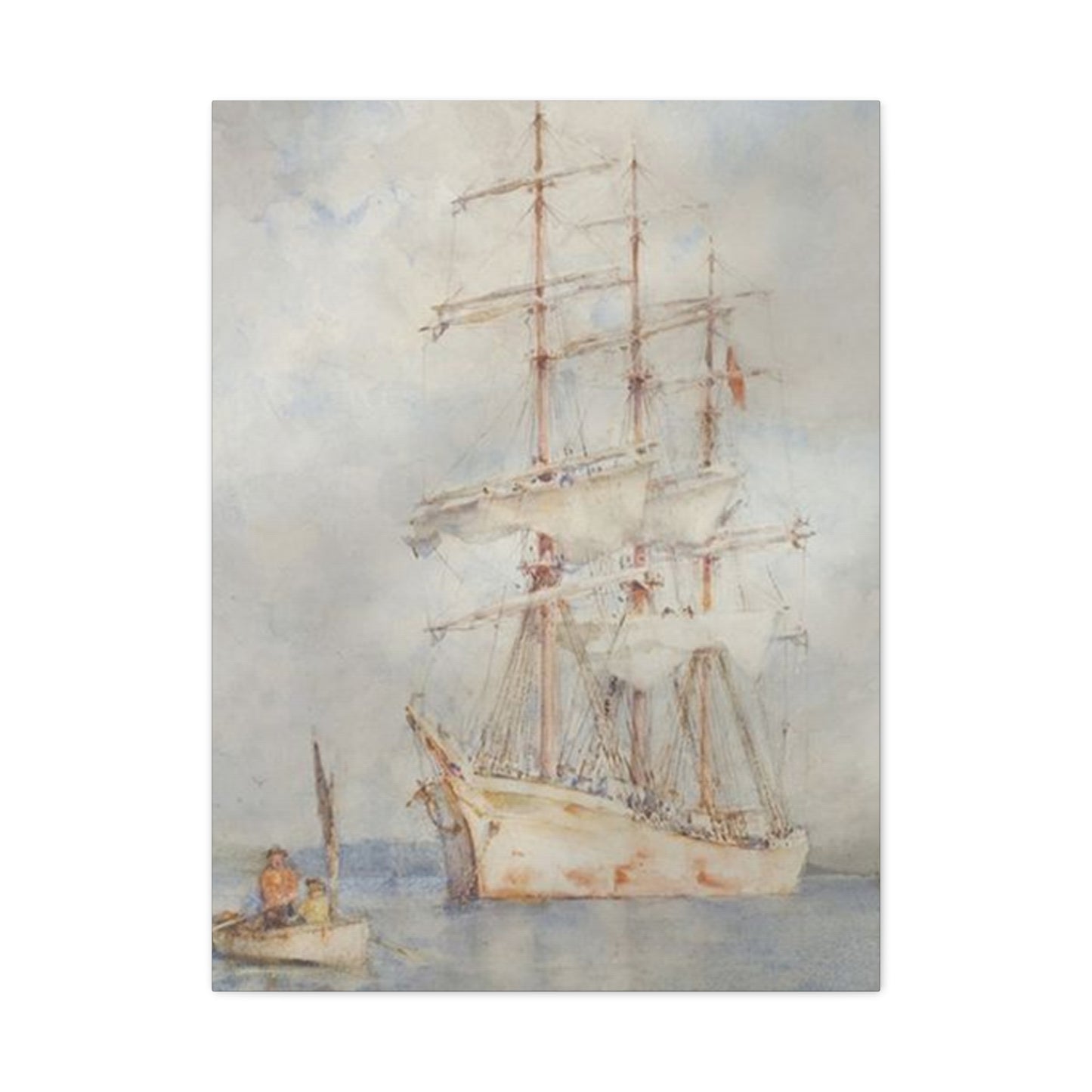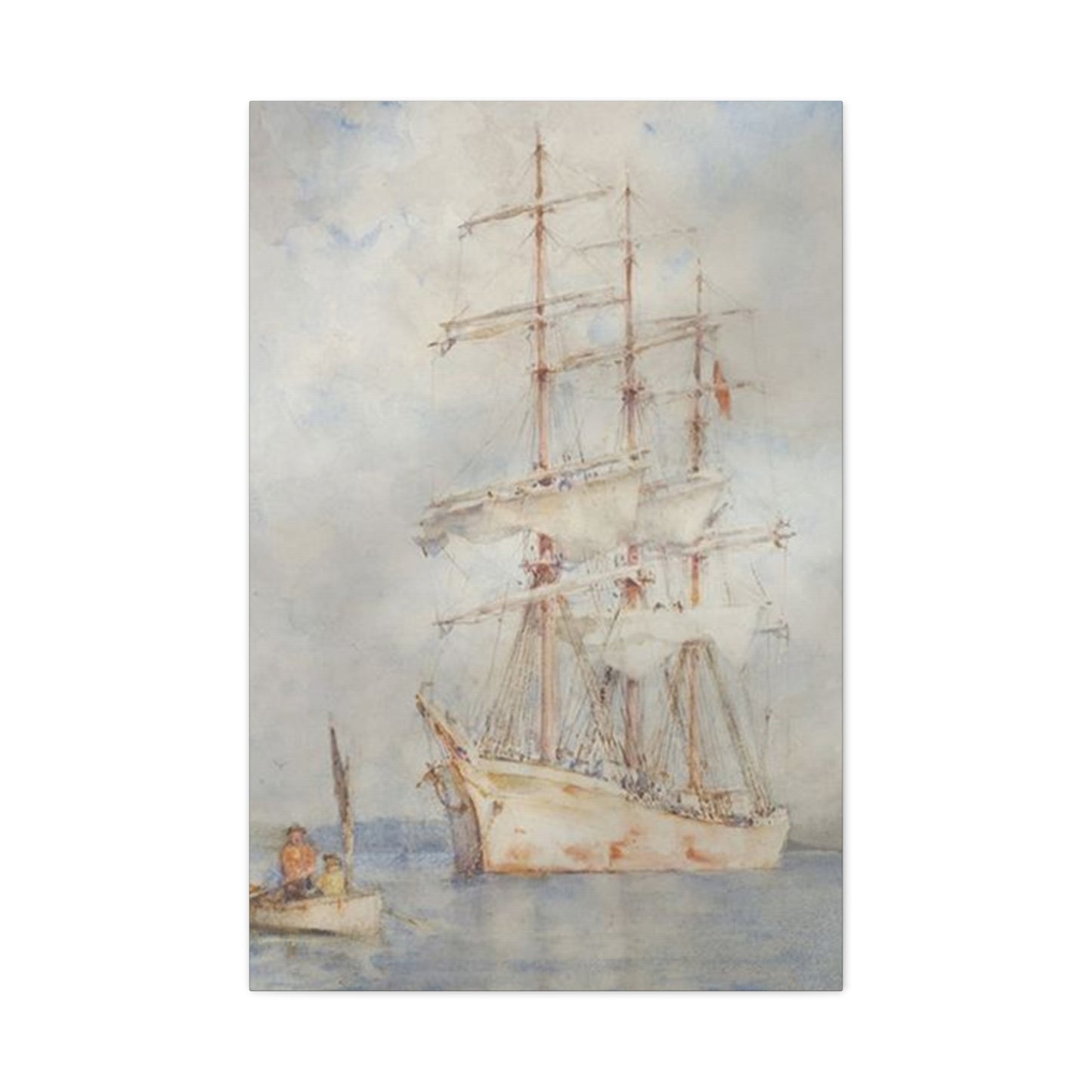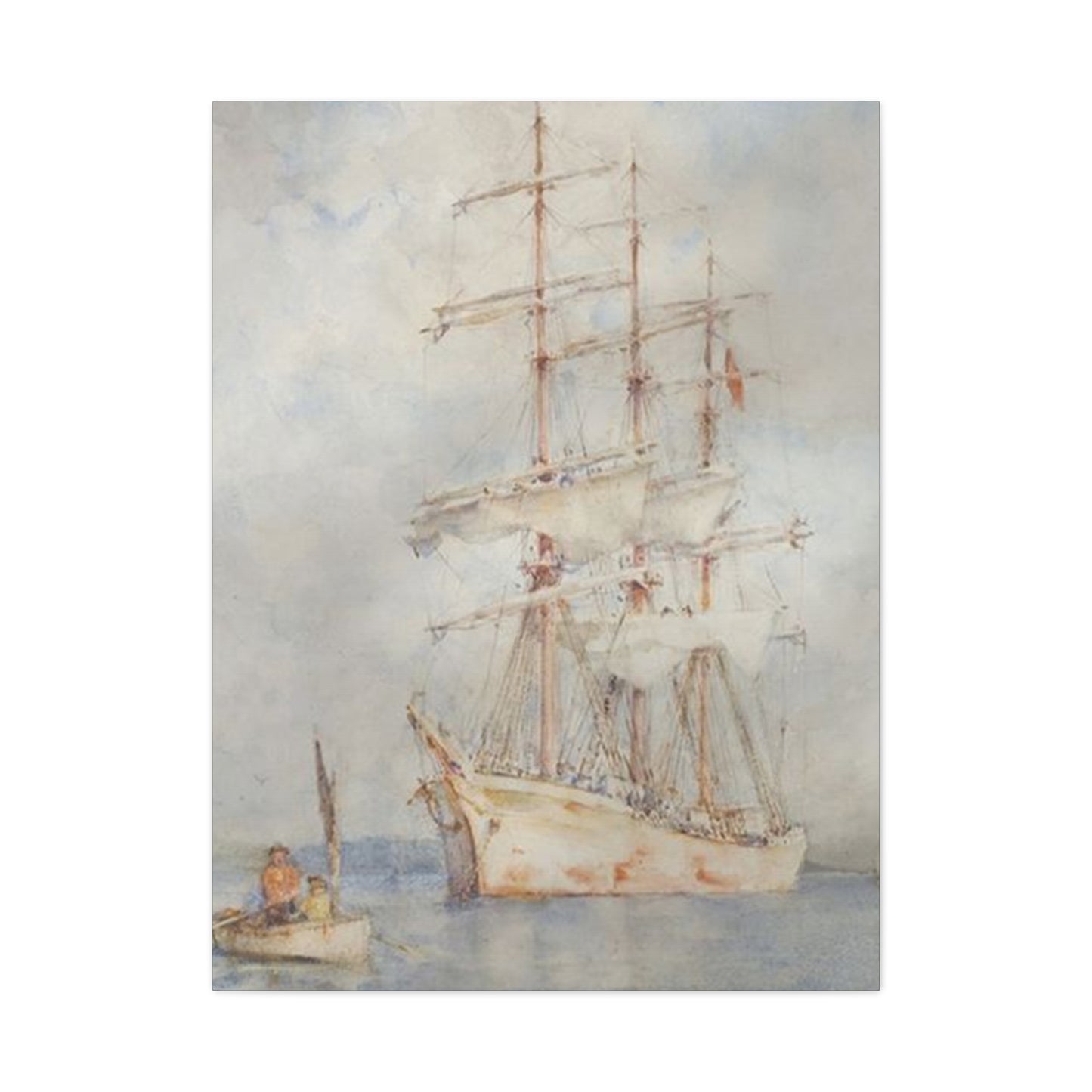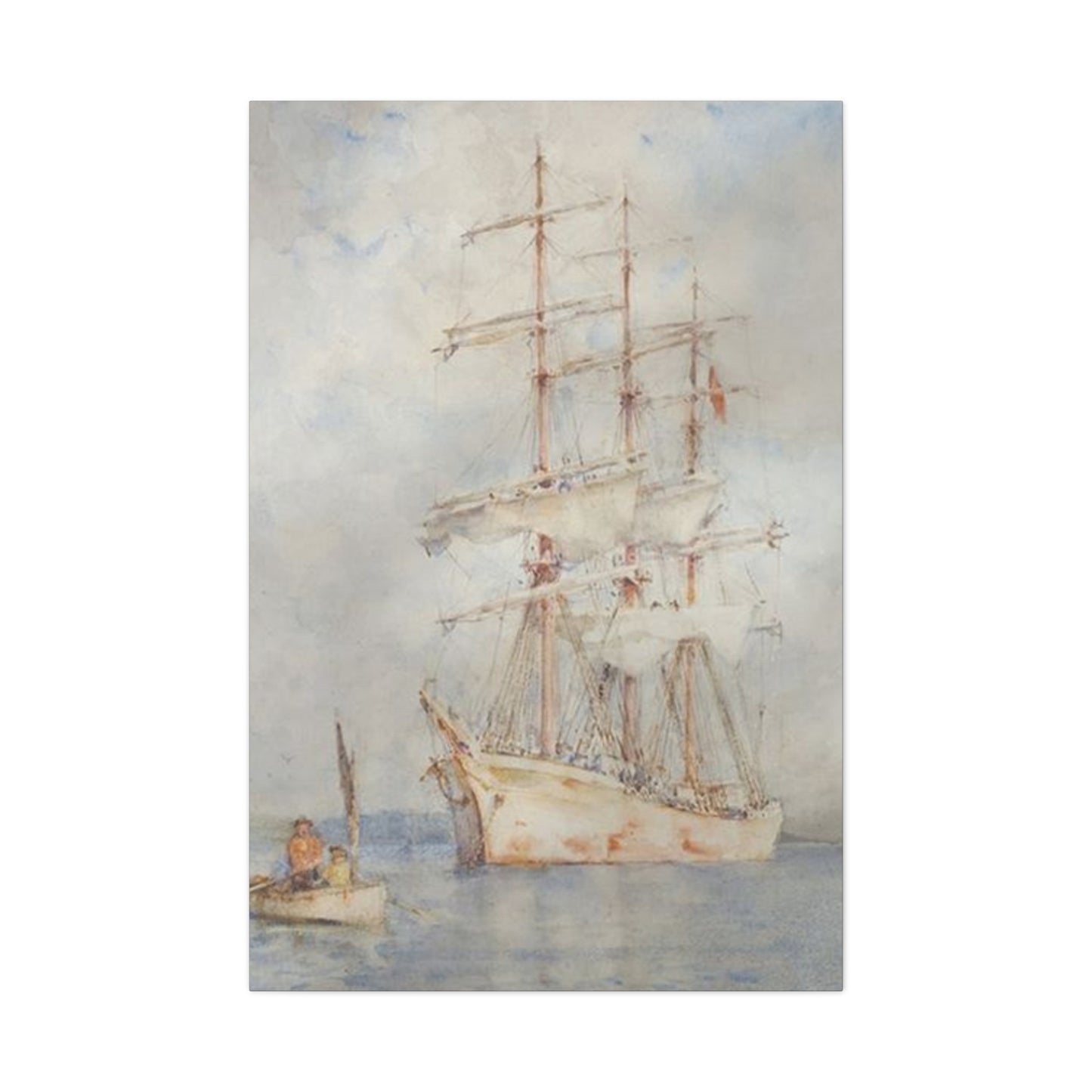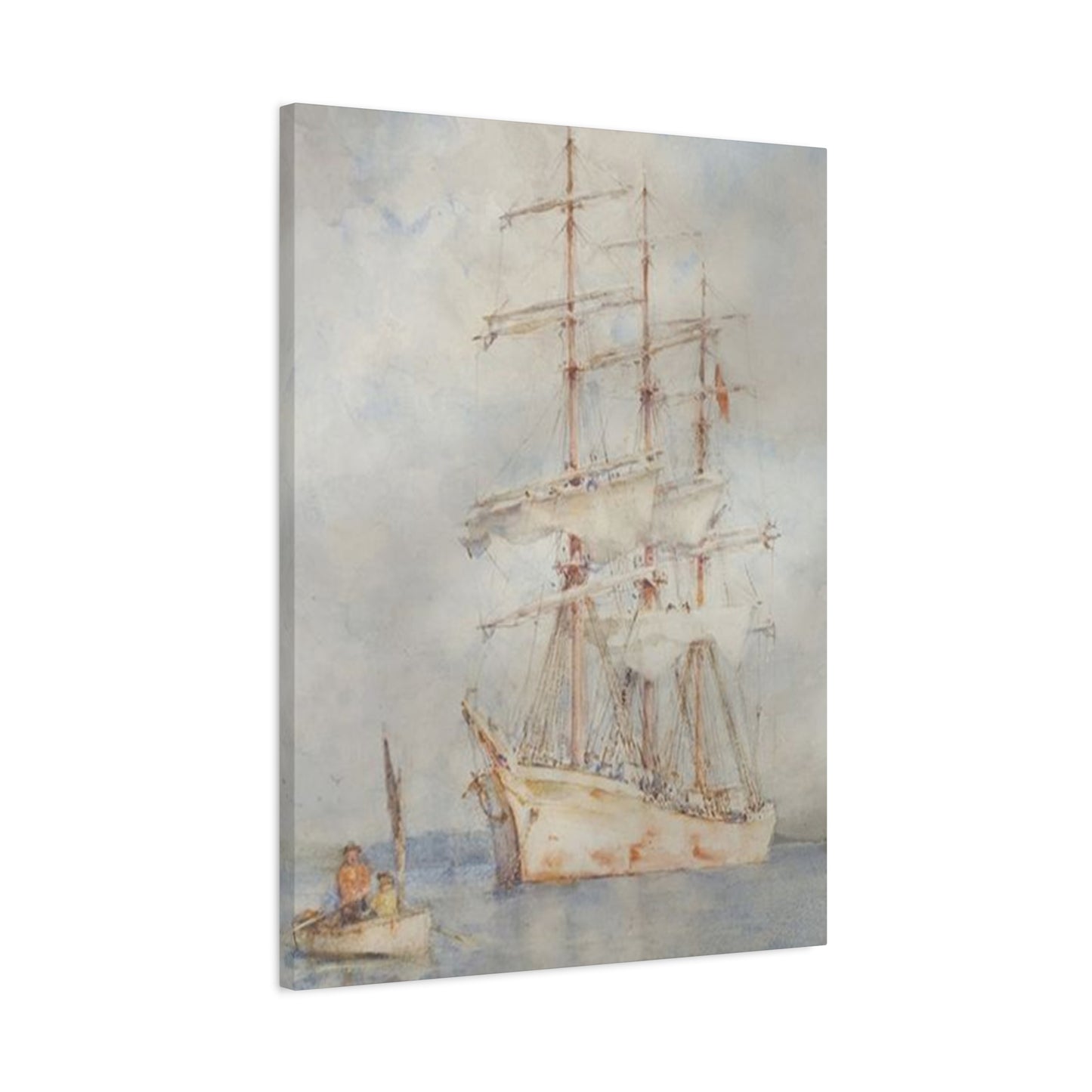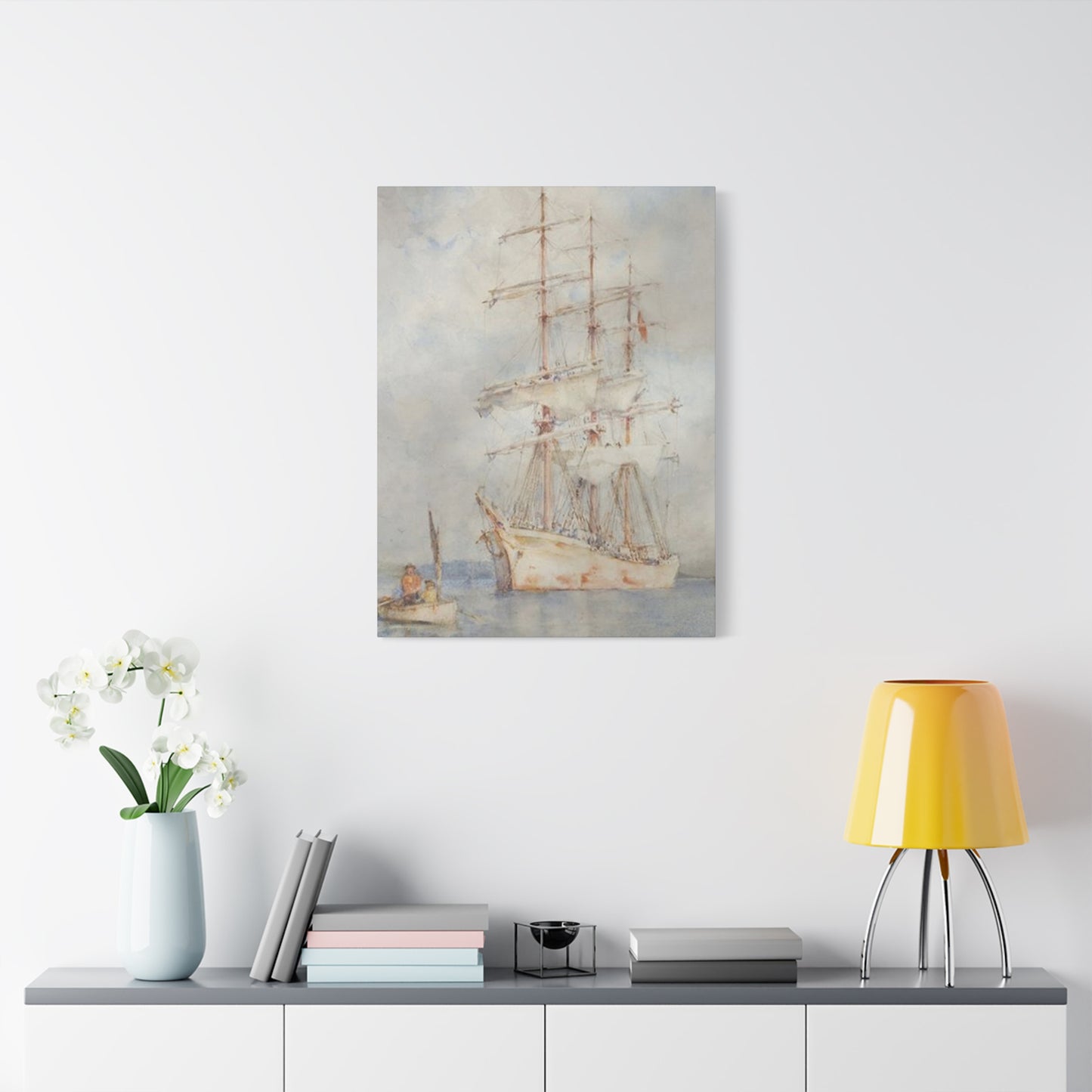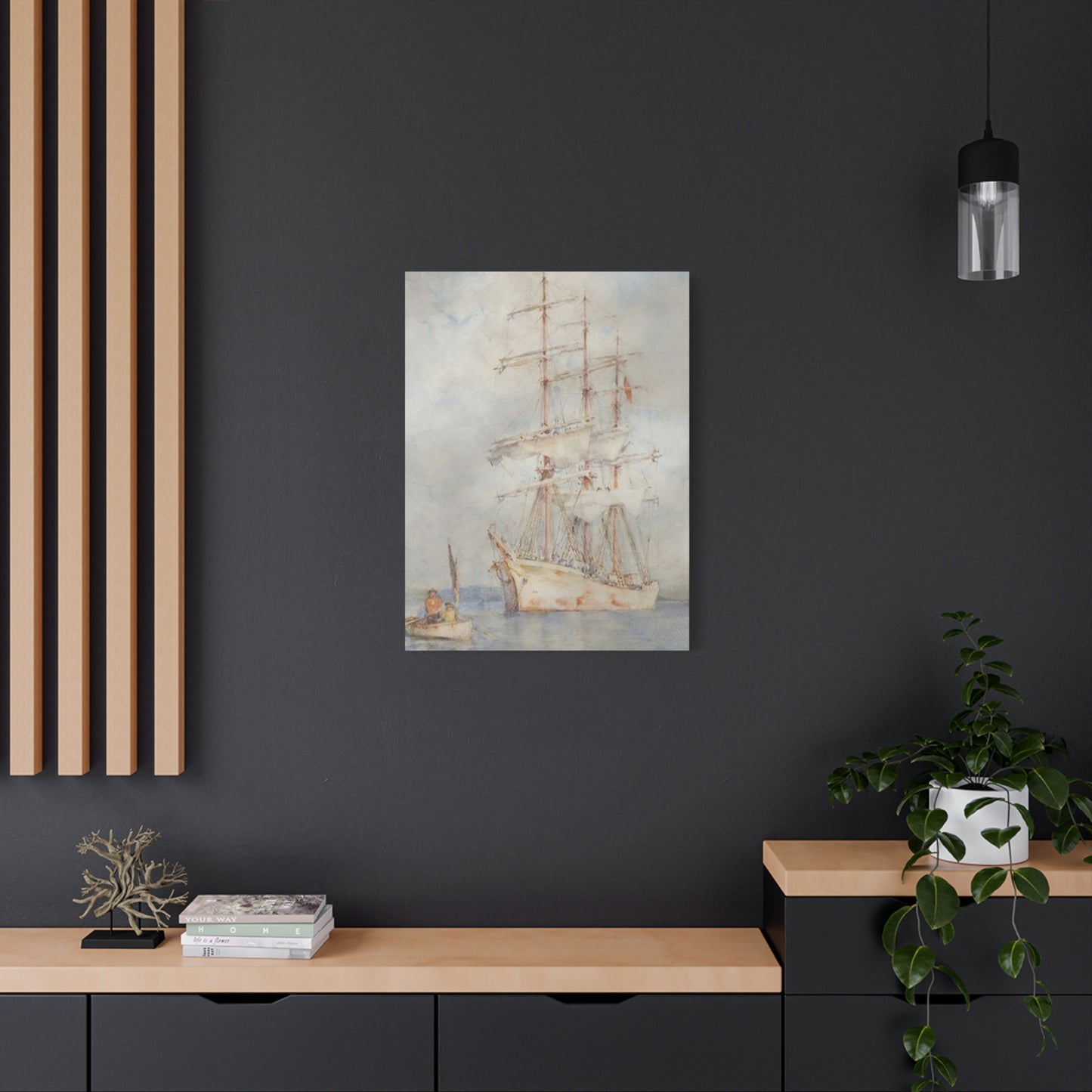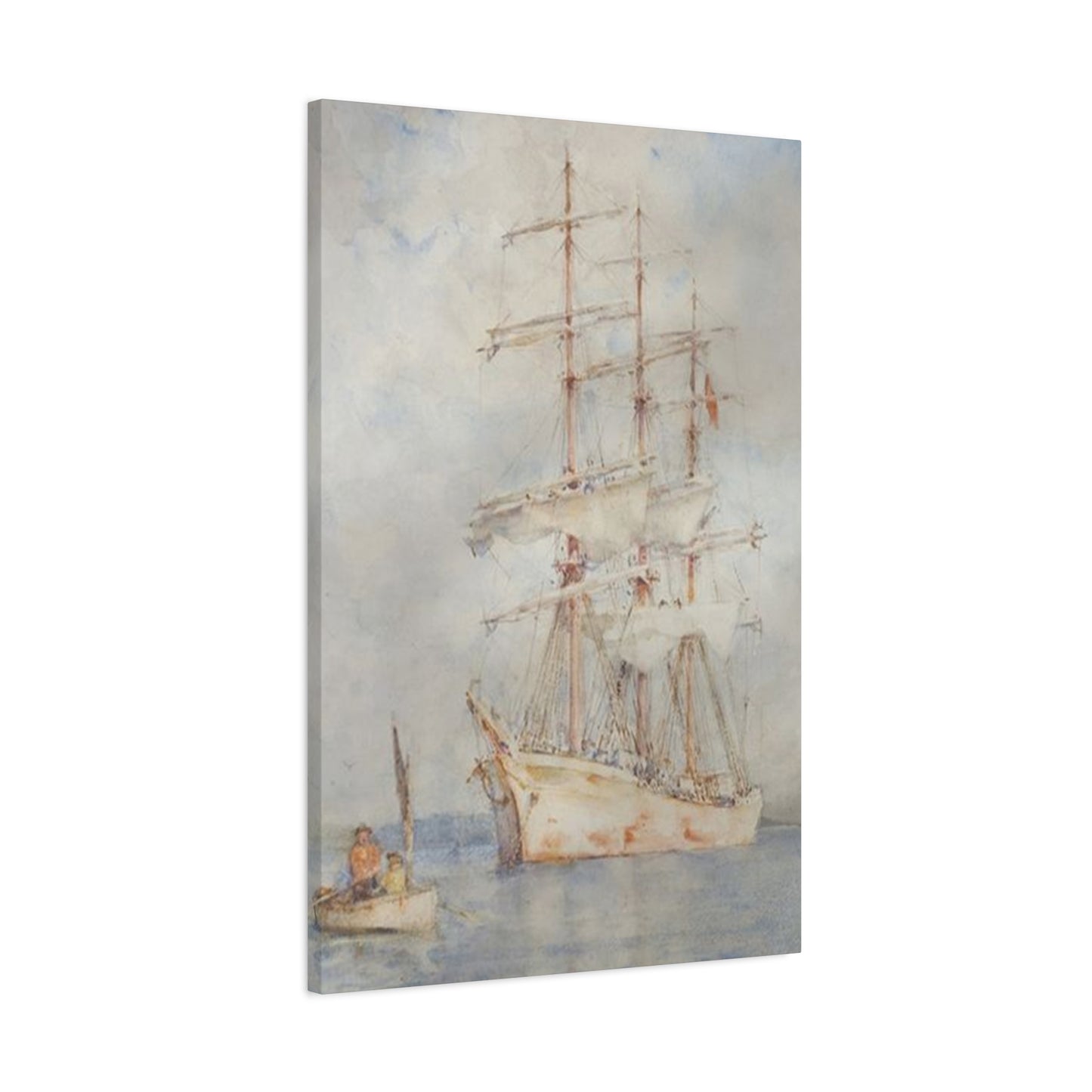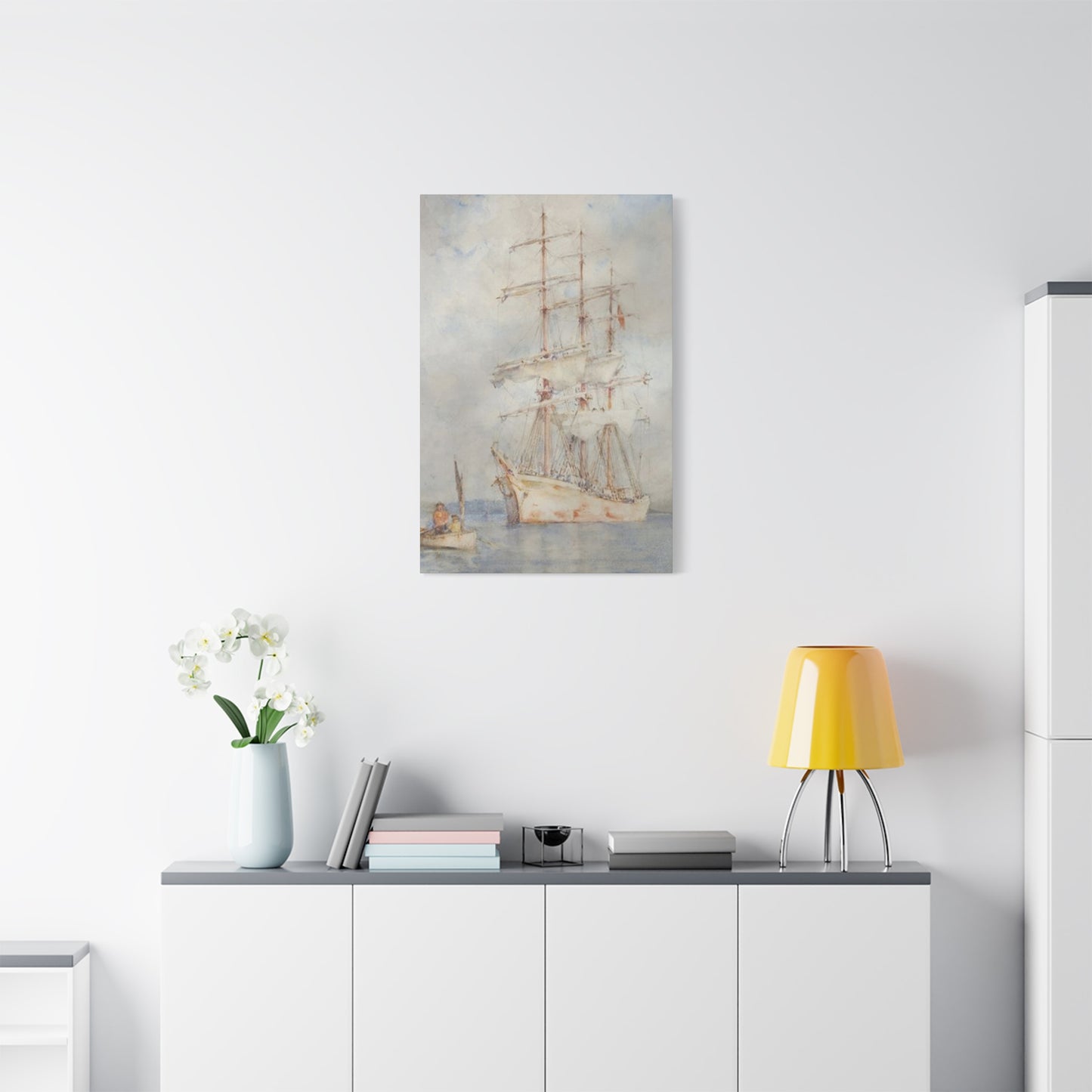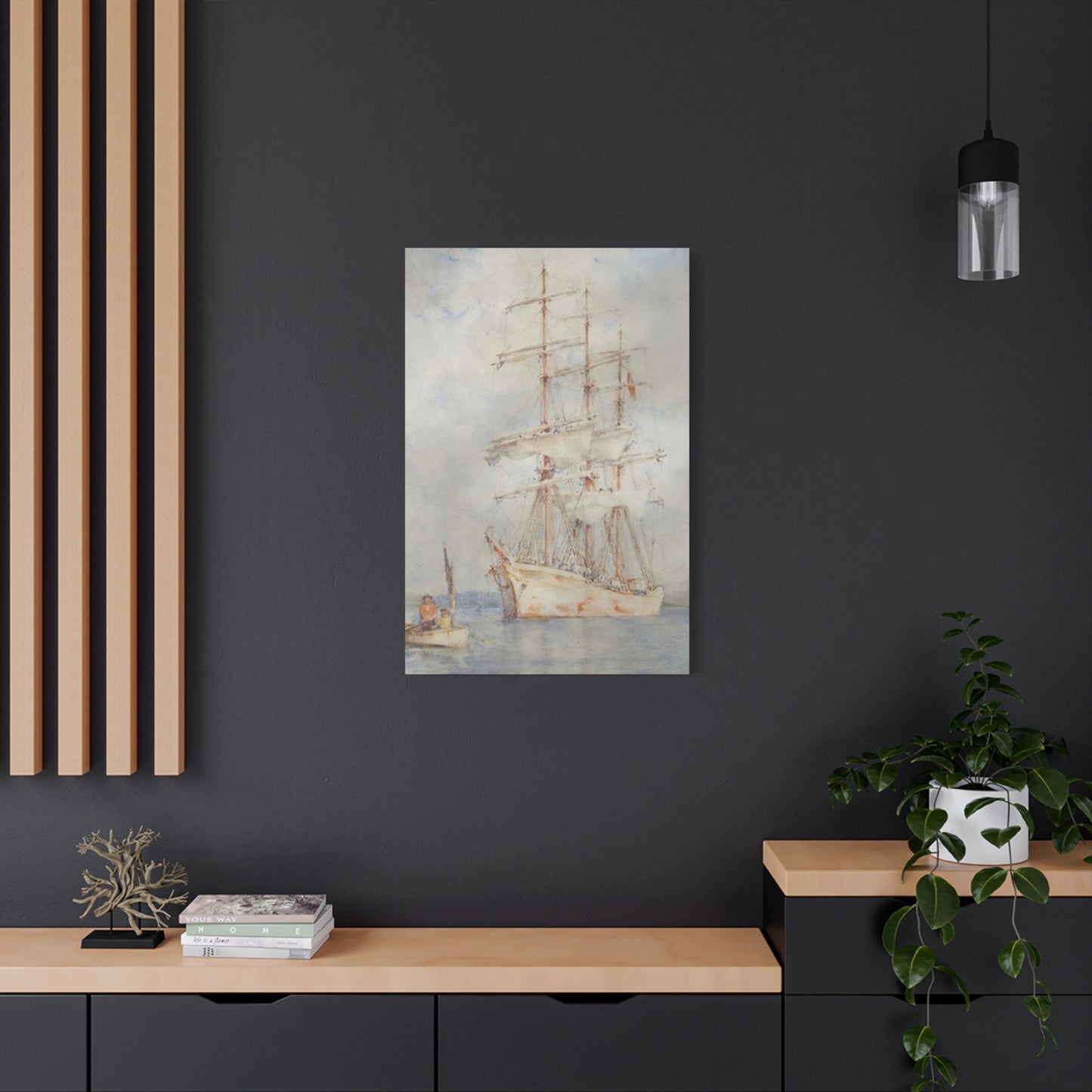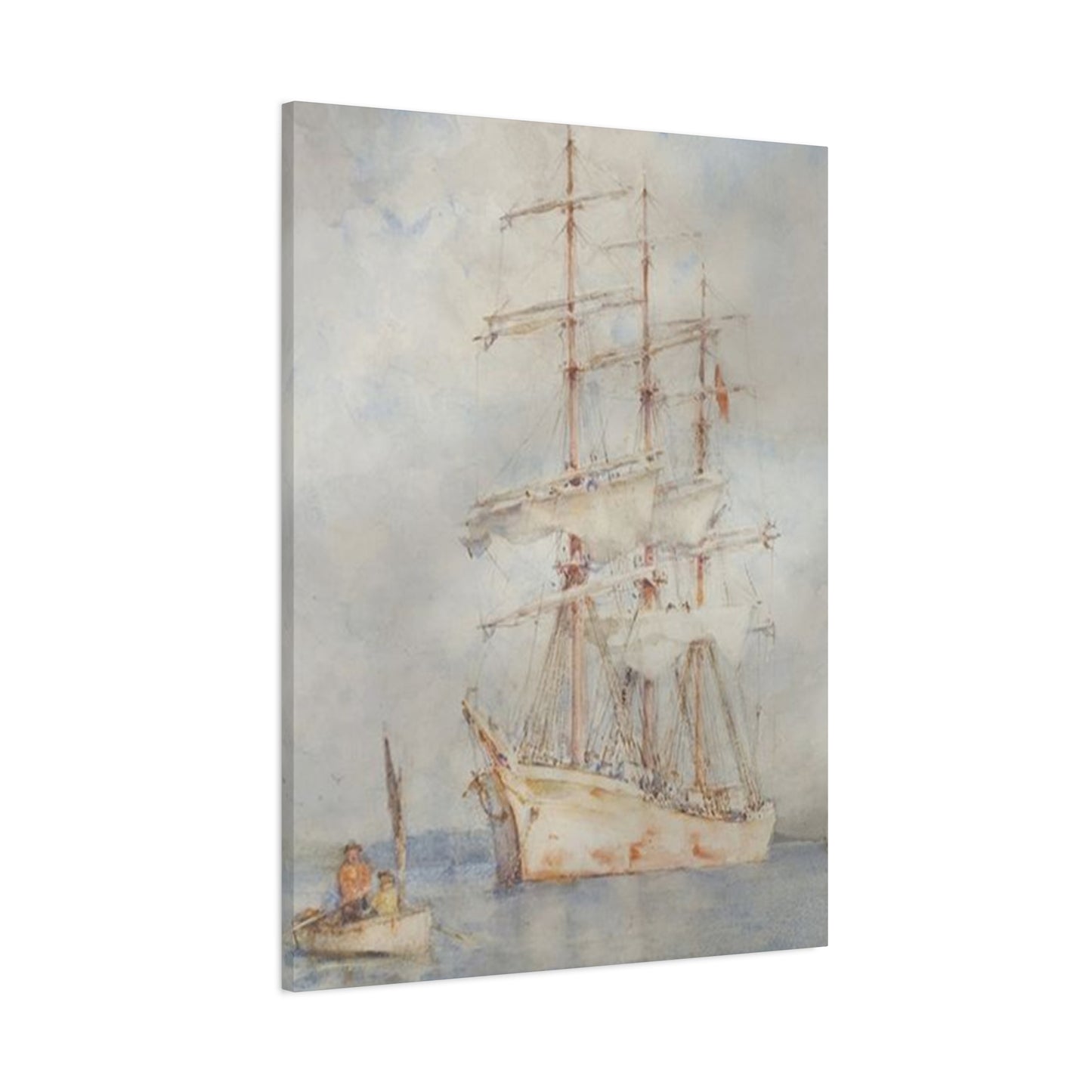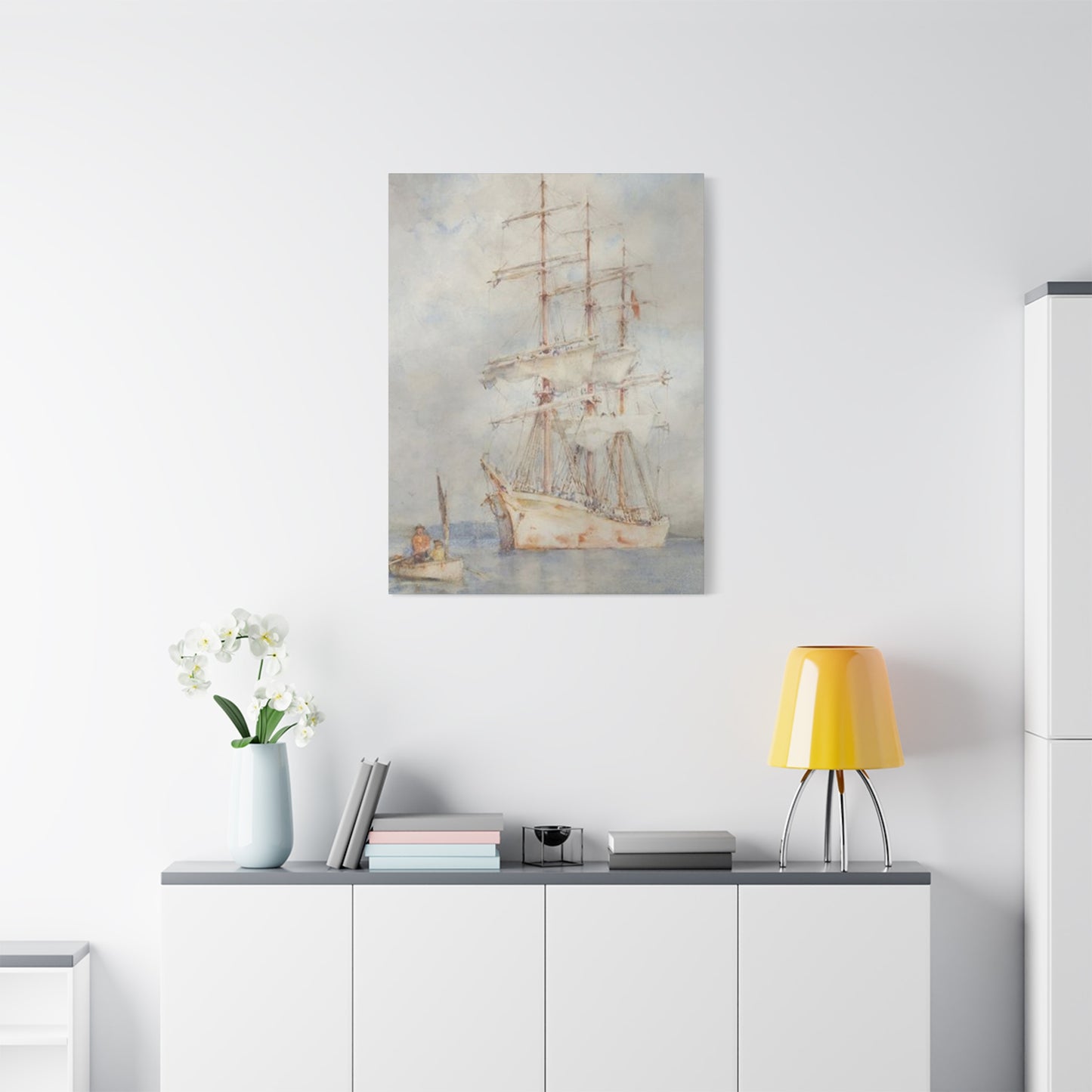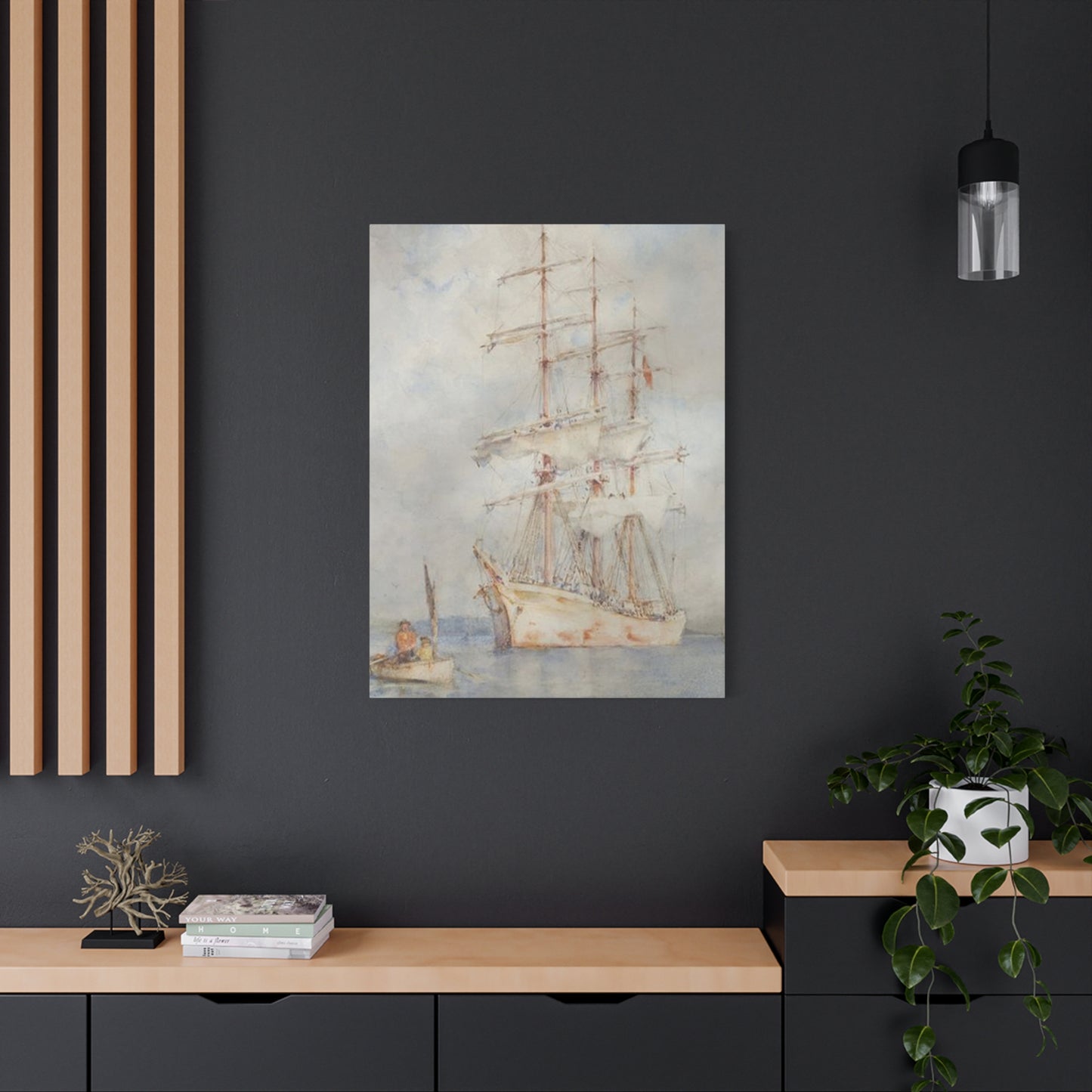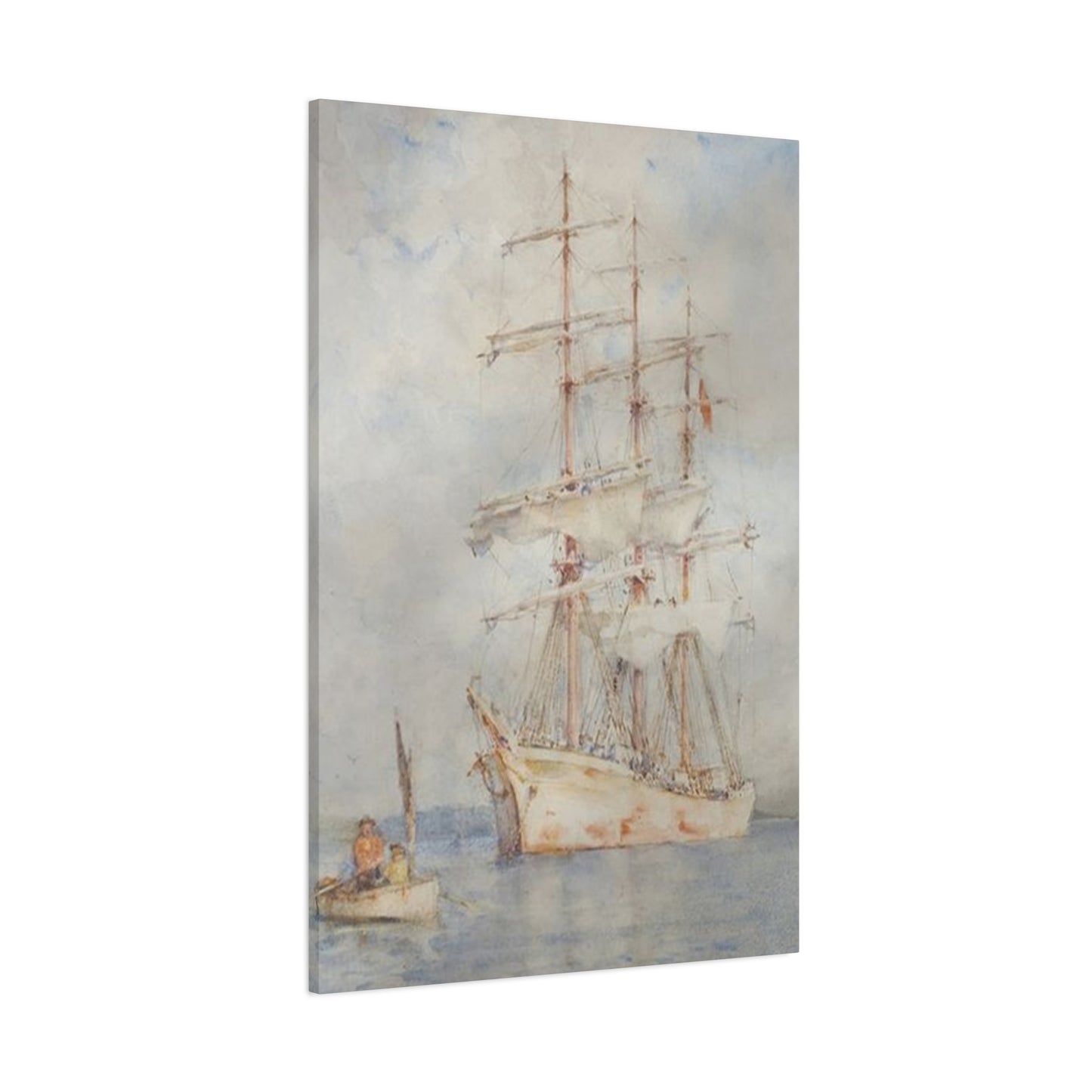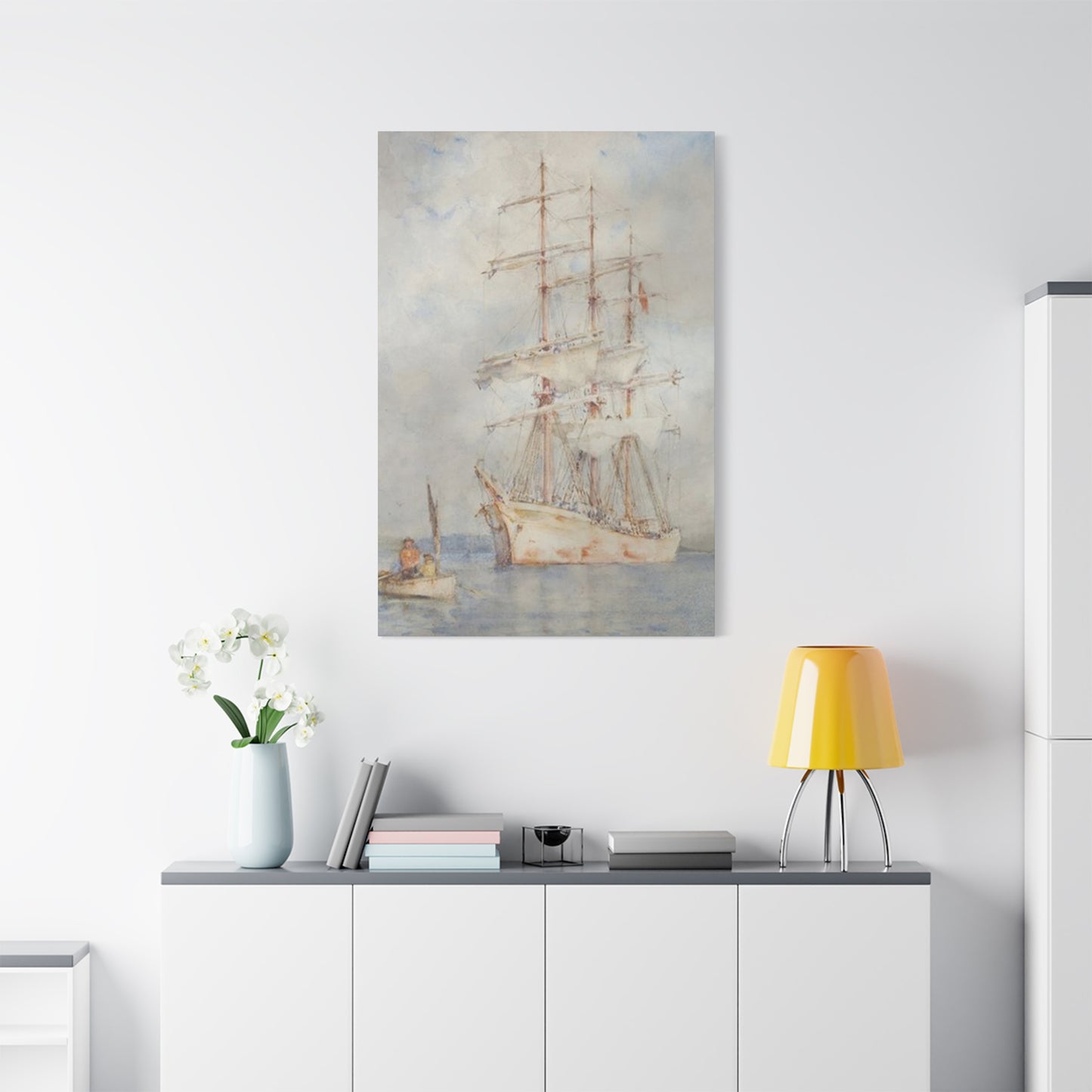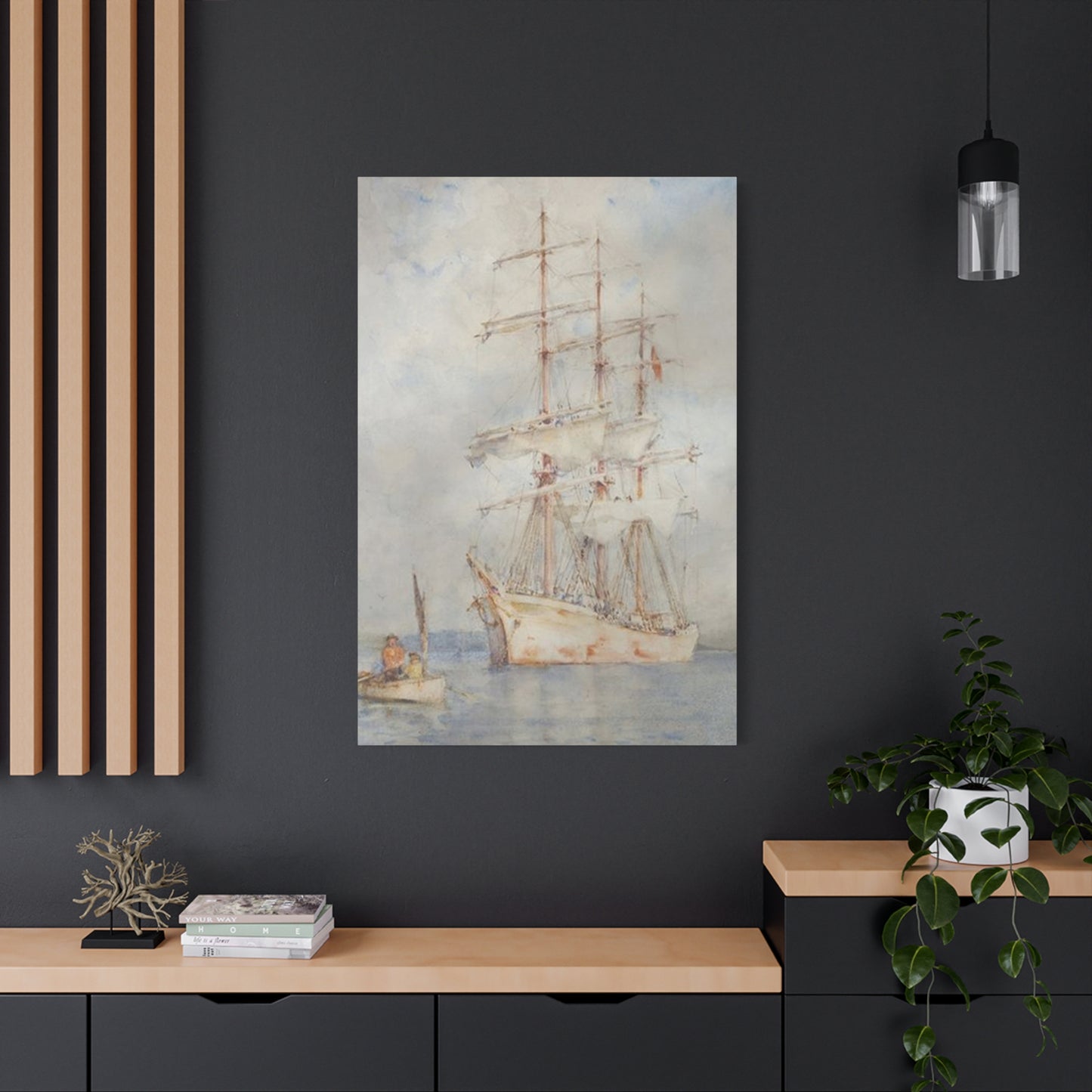The Ocean’s Legacy: Large Vintage Ship Wall Art as a Tribute to Maritime History
The allure of the open sea has captivated humanity for centuries, inspiring countless artistic interpretations that blend adventure, history, and aesthetic beauty. Maritime artwork, particularly pieces featuring historic vessels, offers a distinctive way to infuse personality and character into residential and commercial environments. These artistic representations serve as visual narratives, connecting contemporary spaces with the romance of oceanic exploration and the golden age of seafaring. Whether adorning the walls of a seaside cottage or adding dimension to a metropolitan apartment, these timeless pieces create focal points that spark conversation and imagination.
The resurgence of interest in nautical-themed decoration reflects a broader cultural appreciation for craftsmanship, historical significance, and the enduring symbolism of maritime adventure. From intricate depictions of merchant vessels to dramatic renderings of naval warships, these artistic works transcend mere decoration, becoming windows into periods when wooden ships ruled the waves and navigation was as much art as science. The versatility of these pieces allows them to complement various design philosophies, from traditional coastal aesthetics to unexpectedly sophisticated urban settings.
Contemporary collectors and interior design enthusiasts increasingly recognize the value of incorporating maritime heritage into their living spaces. These works offer more than visual appeal—they represent human ingenuity, exploration, and the timeless relationship between civilization and the ocean. As we explore the multifaceted world of nautical canvas art, we'll discover how these pieces can transform ordinary rooms into extraordinary spaces filled with character, depth, and storytelling potential.
Sail into Style with Vintage Ship Art
Maritime artwork featuring historic vessels brings an undeniable sophistication to any interior environment. These pieces capture the essence of seafaring history while providing contemporary spaces with visual interest and depth. The appeal of such artwork lies in its ability to evoke nostalgia, adventure, and the boundless possibilities associated with oceanic travel. When carefully selected and thoughtfully positioned, these works become more than decorative elements—they transform into conversation starters that reflect the owner's appreciation for history, craftsmanship, and artistic expression.
The artistic representation of sailing vessels has evolved significantly throughout history, with each era contributing unique stylistic approaches and technical innovations. Early maritime paintings often served documentary purposes, recording specific ships for naval records or commemorating significant voyages. As artistic techniques advanced, these depictions became increasingly sophisticated, incorporating atmospheric effects, dramatic lighting, and meticulous attention to rigging details and hull construction. Today's reproductions and contemporary interpretations of these classic works maintain this tradition of excellence while making maritime art accessible to broader audiences.
Incorporating nautical artwork into modern interiors requires understanding how these pieces interact with surrounding design elements. The inherent drama of seafaring imagery—billowing sails, churning waves, dramatic skies—creates natural focal points that draw the eye and anchor room compositions. The color palettes typically associated with maritime scenes, featuring deep blues, stormy grays, warm browns, and crisp whites, provide versatile foundations that complement numerous decorating schemes. These natural color harmonies make nautical artwork surprisingly adaptable, working equally well in spaces dominated by neutral tones or those featuring bolder, more saturated hues.
The emotional resonance of maritime artwork extends beyond aesthetic considerations. Ships represent freedom, exploration, and the human drive to venture beyond known horizons. This symbolic significance adds psychological depth to spaces, subtly influencing the atmosphere and emotional character of rooms. A well-chosen nautical piece can make cramped quarters feel more expansive, static environments more dynamic, and mundane spaces more adventurous. This transformative quality explains why such artwork remains perpetually popular across diverse demographics and geographic locations.
Selecting appropriate maritime artwork involves considering factors beyond personal taste. Scale plays a crucial role—oversized pieces command attention and work best in rooms with generous wall space and higher ceilings, while smaller works suit intimate settings or grouped arrangements. The level of detail in the artwork should align with viewing distances; highly detailed pieces reward close examination and work well in spaces where viewers can approach closely, while bolder, more impressionistic renderings maintain impact from across larger rooms. Framing choices significantly influence how artwork integrates with surrounding decor, with rustic wooden frames enhancing traditional aesthetics and sleek metal frames supporting contemporary design directions.
The historical authenticity of maritime artwork varies considerably, ranging from faithful reproductions of specific historical vessels to romanticized or imaginative interpretations. Purists may prefer artwork depicting actual ships with documented histories, appreciating the educational dimension these pieces provide. Others gravitate toward more stylized representations that prioritize artistic impact over historical accuracy. Neither approach is inherently superior; the choice depends on individual preferences and the intended role of the artwork within the broader design scheme. What matters most is selecting pieces that resonate personally while serving the functional design requirements of the space.
Classic Nautical Wall Prints for Bold Spaces
Creating impactful interiors requires courage to embrace dramatic design elements that command attention and establish clear aesthetic directions. Nautical wall prints featuring bold compositions and striking visual contrast excel at this purpose, offering designers and homeowners powerful tools for spatial transformation. These prints harness the inherent drama of maritime subjects—towering masts, windswept sails, tumultuous seas—to inject energy and movement into static environments. The key to successfully incorporating such pieces lies in understanding their visual weight and ensuring surrounding elements support rather than compete with their commanding presence.
Bold nautical prints work particularly well in spaces that might otherwise feel characterless or generic. Modern construction often produces rooms with neutral finishes and minimal architectural interest, creating blank canvases that benefit from strong artistic statements. A large-scale print featuring a magnificent clipper ship in full sail or a dramatic naval engagement instantly establishes character and provides a foundation around which additional design decisions can cohere. This approach to decoration emphasizes quality over quantity, investing in fewer but more impactful pieces rather than cluttering walls with numerous smaller items.
The psychological impact of bold artwork extends beyond immediate visual appeal. Large-scale prints create immersive experiences, drawing viewers into depicted scenes and fostering emotional engagement with the space. This quality makes them particularly valuable in areas where people spend extended periods, such as living rooms, studies, or professional offices. The presence of such artwork subtly influences mood and atmosphere, with nautical themes specifically evoking associations with adventure, freedom, and expansive horizons. These psychological effects contribute to overall spatial experiences, making environments feel more dynamic and stimulating.
Color intensity significantly affects how bold prints function within spaces. High-contrast compositions featuring stark blacks against brilliant whites create graphic punch that reads clearly even from considerable distances. These dramatic pieces work exceptionally well in contemporary settings where clean lines and uncluttered aesthetics prevail. Conversely, prints featuring more nuanced color gradations and subtle tonal variations suit environments where visual harmony and cohesion take precedence over dramatic impact. Understanding these distinctions allows for more intentional selection processes that align artwork characteristics with broader design objectives.
Placement strategies for bold nautical prints require careful consideration of spatial dynamics and traffic patterns. These pieces function best when given adequate breathing room, allowing their visual impact to register without distortion or competition from nearby elements. Hanging heights should position focal points at natural eye levels, typically centering artwork between sixty and sixty-five inches from floor level. However, oversized pieces may require adjustments to these standards, particularly in rooms with non-standard ceiling heights or unusual architectural features. The goal remains consistent: ensuring artwork integrates naturally within spatial contexts while maintaining commanding presence.
Lighting considerations dramatically affect how bold prints present themselves. Natural illumination from windows creates dynamic viewing experiences as changing daylight conditions reveal different aspects of artwork throughout the day. However, relying solely on natural light risks diminishing impact during evening hours when spaces primarily function. Strategic artificial lighting—whether picture lights, track systems, or carefully positioned accent fixtures—ensures consistent presentation regardless of time or ambient conditions. Proper lighting also protects artwork from glare and reflection issues that can compromise visibility and diminish enjoyment.
Bring History Home with Vintage Ship Canvases
Historical consciousness enriches contemporary living environments, connecting present experiences with past traditions and fostering appreciation for human achievement across centuries. Canvas artwork featuring historic vessels serves this purpose beautifully, transforming ordinary residences into galleries celebrating maritime heritage. These pieces function as educational resources and aesthetic elements simultaneously, offering viewers opportunities to contemplate shipbuilding evolution, naval history, and the seafaring traditions that shaped global commerce and cultural exchange. By incorporating such artwork, homeowners create spaces that honor the past while remaining firmly grounded in present realities.
The technical execution of canvas-based artwork contributes significantly to its appeal and longevity. Canvas provides an ideal substrate for reproducing maritime paintings, offering texture that enhances visual depth and creates surface interest lacking in flat paper prints. Quality canvas reproductions capture the brushwork characteristics of original paintings, preserving artistic integrity while making historically significant works accessible to broader audiences. Modern printing technologies achieve remarkable fidelity, reproducing subtle color gradations and fine details that earlier reproduction methods could not approach. This technical excellence ensures contemporary reproductions honor the artistic achievements they represent.
Understanding the historical context of depicted vessels adds dimensions of appreciation beyond purely aesthetic considerations. Each ship design represents specific technological developments, economic conditions, and strategic requirements of its era. East Indiamen exemplified the merchant vessels that built commercial empires and facilitated global trade networks. Ships of the line embodied naval power during the age of sail, when maritime dominance determined geopolitical outcomes. Clipper ships represented the pinnacle of sail-powered speed, racing valuable cargoes across oceans before steam propulsion rendered them obsolete. Recognizing these historical significances transforms artwork viewing from passive observation into active engagement with human history.
Selecting historically themed canvas artwork involves balancing aesthetic preferences with educational interests. Some collectors prioritize artistic quality and visual impact, selecting pieces primarily for their decorative potential regardless of historical specificity. Others emphasize accuracy and documentation, preferring artwork depicting actual vessels with verifiable histories and authentic details. Both approaches offer valid paths toward meaningful collections that reflect individual values and interests. The most satisfying collections often blend these priorities, combining visually stunning pieces with historically significant subjects that reward both casual viewing and detailed examination.
The display of historical maritime canvases creates opportunities for broader educational engagement, particularly in family environments where children benefit from exposure to diverse knowledge domains. Parents can use displayed artwork as starting points for discussions about exploration, navigation, technological progress, and cultural exchange. These conversations plant seeds of curiosity that may blossom into lifelong interests in history, geography, or maritime studies. Even without explicit educational intentions, simply living with historically grounded artwork creates ambient learning environments where knowledge absorption occurs through regular exposure and unconscious pattern recognition.
Preservation concerns influence decisions about acquiring and displaying canvas artwork featuring historical subjects. While modern reproduction techniques create durable pieces resistant to common deterioration factors, proper care ensures longevity and sustained visual appeal. Positioning artwork away from direct sunlight prevents fading and UV damage that can compromise colors over time. Maintaining stable humidity levels protects canvas from warping or developing mold issues. Regular but gentle cleaning removes accumulated dust without damaging surfaces. These straightforward maintenance practices preserve artwork quality, allowing pieces to remain family treasures passing between generations rather than disposable decorations requiring frequent replacement.
Large Vintage Ship Art for Statement Walls
Architectural spaces often include prominent wall expanses that demand special consideration during design processes. These statement walls—frequently the first surfaces visible when entering rooms or positioned opposite primary seating areas—benefit enormously from oversized artwork that matches their scale and prominence. Large format maritime pieces depicting historic vessels fulfill this role superbly, offering visual impact proportionate to the architectural features they adorn. The relationship between artwork scale and wall dimensions critically affects overall aesthetic success, with properly sized pieces creating harmonious compositions that feel intentional and complete.
The production of large-scale canvas artwork involves technical considerations differing from smaller format pieces. Maintaining image resolution and clarity across expansive surfaces requires high-quality source materials and sophisticated printing technologies. Inferior reproduction methods produce visibly pixelated or blurry results that become increasingly apparent as viewing distances decrease. Quality large-format printing preserves fine details, subtle color transitions, and textural qualities that give artwork presence and substance. Investing in properly executed large pieces pays dividends through enhanced visual impact and greater long-term satisfaction compared to cheaper alternatives that sacrifice quality for cost savings.
Designing around statement artwork requires thoughtful consideration of supporting elements and spatial balance. Large maritime pieces naturally dominate visual hierarchies, drawing attention and establishing aesthetic tones for entire rooms. Furniture arrangements should acknowledge this prominence, orienting seating areas toward featured artwork and maintaining unobstructed sightlines that allow proper appreciation. Color schemes can draw inspiration from artwork palettes, echoing dominant hues in textiles, accessories, or accent walls. This coordinated approach creates cohesive environments where individual elements reinforce rather than compete with each other.
The architectural characteristics of walls themselves influence artwork presentation and impact. Textured surfaces like exposed brick or stone create visual interest that can either complement or compete with displayed artwork, depending on execution. Smooth, painted surfaces provide neutral backdrops that allow artwork to shine without distraction. Wall color significantly affects perceived artwork characteristics—light walls create airy, gallery-like presentations, while dark walls add drama and depth. Experimenting with paint samples around proposed artwork locations helps visualize how different background treatments affect overall compositions before committing to final selections.
Installation methods for large-scale artwork require special attention to safety and presentation quality. Substantial pieces demand secure mounting systems capable of supporting considerable weight while maintaining level, flush positioning against walls. Professional installation services often represent worthwhile investments for particularly large or valuable pieces, ensuring proper execution that protects both artwork and walls from damage. Wire hanging systems, French cleats, and specialized heavy-duty hooks each offer advantages depending on specific circumstances. Proper installation not only ensures safety but also optimizes presentation, eliminating tilts or gaps that diminish professional appearance.
The investment required for large-scale quality maritime artwork often exceeds budgets for standard decorative items, prompting careful consideration of long-term value and satisfaction. However, viewing such purchases through lifecycle cost perspectives reveals their economic sensibility. A single outstanding large piece typically provides greater impact and longer-lasting satisfaction than multiple smaller alternatives would deliver. Quality artwork appreciates aesthetically over time as viewers develop deeper relationships with pieces, discovering new details and developing richer appreciations through repeated viewings. This enduring value justifies initial investments, transforming what might seem like luxury purchases into practical decisions that enhance daily living experiences for years or decades.
Timeless Maritime Scenes on Canvas
Certain artistic subjects transcend temporal boundaries, maintaining relevance and appeal across generations despite shifting cultural trends and aesthetic preferences. Maritime scenes depicting sailing vessels exemplify this timeless quality, resonating with contemporary audiences as powerfully as they captivated viewers centuries ago. The enduring appeal of nautical themes stems from fundamental human relationships with oceans and the symbolic significance of seafaring. Water represents both sustenance and danger, offering opportunities while demanding respect. Ships embody human ingenuity overcoming natural obstacles, transforming hostile environments into navigable domains. These deep symbolic resonances ensure maritime artwork remains perpetually relevant regardless of prevailing design fashions.
The artistic treatment of maritime subjects has evolved considerably throughout history, with different periods emphasizing varying aspects of seafaring experience. Romantic-era paintings dramatized the sublime power of nature, depicting ships struggling against overwhelming storm forces or sailing peacefully under magnificent skies. These compositions emphasized emotional impact over documentary accuracy, using maritime subjects as vehicles for exploring human relationships with nature. Later periods favored more realistic approaches, documenting specific vessels with technical precision that satisfied both artistic and archival purposes. Contemporary interpretations blend these traditions, offering both emotionally resonant and historically informed perspectives on nautical subjects.
The color palettes inherent to maritime scenes contribute significantly to their versatile appeal. Ocean blues range from deep navy to bright turquoise, providing foundations that harmonize with numerous interior color schemes. Neutral tones representing ships, sails, and shorelines—browns, tans, grays, whites—offer additional coordination points that simplify design integration. Dramatic skies introduce variables ranging from sunny yellows to stormy purples, creating atmospheric effects that establish mood while maintaining overall palette coherence. These naturally occurring color harmonies make maritime artwork unusually adaptable, capable of complementing design approaches from strictly traditional to boldly contemporary.
Compositional elements within maritime artwork guide viewer attention and create visual narratives that unfold through careful observation. Artists strategically position vessels within frames, using placement to suggest motion, direction, and relationship with surrounding environments. Diagonal orientations create dynamic energy, implying movement and action. Centered compositions project stability and permanence, focusing attention on ship details rather than suggested narratives. Background elements—distant shorelines, other vessels, atmospheric effects—provide context and depth, transforming simple ship portraits into complex scenic compositions. Understanding these compositional strategies enhances artwork appreciation, revealing intentional artistic decisions that might otherwise escape notice.
The technical aspects of ship rendering demonstrate artistic skill while satisfying viewer expectations for authenticity and accuracy. Rigging systems on sailing vessels represent complex engineering achievements, with networks of lines, blocks, and sails forming intricate patterns that artists must depict convincingly. Hull shapes, proportions, and construction details vary significantly between vessel types and historical periods, requiring artistic knowledge beyond general drafting skills. Water rendering presents particular challenges, as artists must capture both transparency and reflectivity while suggesting motion and depth. Accomplished maritime artists master these technical demands, producing works that satisfy both aesthetic and authenticity criteria.
Collecting timeless maritime artwork builds visual legacies that transcend individual ownership periods. Unlike trendy decorative items that quickly date themselves, quality nautical pieces remain relevant and appealing indefinitely. This longevity makes them excellent candidates for heirloom status, passing between family generations while maintaining aesthetic and emotional value. The stories associated with particular pieces—acquisition circumstances, displayed locations, viewer responses—accumulate over time, adding layers of personal history to artistic and historical significance. This multi-dimensional value proposition distinguishes serious artwork from disposable decoration, justifying thoughtful selection processes and appropriate financial investments.
Rustic Charm with Vintage Ship Prints
Design philosophies emphasizing organic materials, weathered finishes, and handcrafted aesthetics have gained considerable traction in contemporary interior decoration. This rustic approach prioritizes authenticity, warmth, and connection with natural materials over sleek minimalism or formal sophistication. Maritime prints featuring historic vessels align naturally with rustic sensibilities, particularly when presented with appropriate framing and positioning strategies. The aged quality implied by nautical subjects complements distressed furniture, reclaimed wood accents, and other elements common in rustic interiors. This compatibility makes ship-themed artwork particularly valuable for designers and homeowners pursuing rustic or farmhouse-inspired aesthetics.
The relationship between artwork and framing significantly influences overall presentation and stylistic impact. Rustic maritime prints benefit from frames that complement rather than contradict their character. Weathered wood frames in natural finishes or painted surfaces showing intentional distressing create visual continuity between artwork subjects and their presentations. Wider frame profiles provide substantial presence appropriate for rustic aesthetics, which generally favor bold, substantial elements over delicate refinement. Metal frames in aged bronze or wrought iron finishes offer alternative directions that maintain rustic sensibilities while introducing material variety. Frame selection thus becomes integral to overall artistic statements rather than mere practical necessity.
Color treatments significantly affect how maritime prints function within rustic environments. Sepia-toned prints create aged appearances that naturally complement rustic design directions, suggesting historical documents or faded photographs rather than contemporary reproductions. Black and white renderings offer graphic clarity while maintaining period-appropriate aesthetics. Full-color prints can work within rustic contexts when colors appear somewhat muted or faded rather than intensely saturated. These tonal considerations ensure artwork integrates seamlessly with surrounding elements rather than introducing jarring contemporary notes that disrupt carefully cultivated atmospheres.
Textural considerations extend beyond frame choices to encompass canvas treatments and printing techniques. Some reproduction methods intentionally introduce texture approximating hand-painted surfaces, adding tactile interest that enhances rustic presentations. Mounting prints on wood panels rather than traditional stretcher bars creates alternative presentations with strong rustic appeal, particularly when panel edges remain visible and unfinished. These presentation choices contribute to overall aesthetic impacts, transforming standard reproductions into objects with greater physical presence and artisanal character.
The placement of rustic maritime prints within architectural contexts requires sensitivity to spatial characteristics and existing decorative elements. Rustic interiors often feature prominent natural materials—exposed beams, stone fireplaces, plank walls—that create strong visual textures and patterns. Artwork must hold its own against these substantial architectural features without creating visual competition that results in cluttered, chaotic appearances. Strategic positioning on more neutral wall sections allows artwork to shine while architectural elements provide complementary framing and context. This balanced approach creates harmonious compositions where multiple strong elements coexist peacefully.
Accessorizing around rustic maritime artwork reinforces thematic coherence while avoiding heavy-handed literalism. Subtle nautical touches—rope details, brass hardware, driftwood accents—create connections without overwhelming spaces with obvious theme decoration. The goal involves suggesting rather than stating, allowing sophisticated subtlety to replace costume-party obviousness. Well-executed rustic nautical interiors feel authentic and lived-in rather than contrived or stagey, achieving aesthetic goals through thoughtful curation rather than enthusiastic accumulation. Maritime artwork serves as anchor points around which these carefully considered environments cohere, providing focus without demanding thematic servitude from surrounding elements.
Nautical Wall Art for Coastal Living
Geographic proximity to oceans, seas, or major waterways naturally influences decorating preferences and aesthetic sensibilities. Coastal living environments benefit from design approaches that acknowledge and celebrate their geographic contexts, creating harmonious relationships between interior spaces and surrounding natural environments. Nautical wall art featuring maritime subjects provides obvious vehicles for establishing these connections, bringing oceanic elements into homes while maintaining sophisticated aesthetics that avoid tourist-trap clichés. The challenge lies in executing coastal themes with sufficient nuance and refinement to create environments that feel authentically connected to place rather than generically themed.
The sensory experiences of coastal living—salt air, crashing waves, abundant natural light, expansive horizons—inform appropriate artwork selections. Maritime pieces should echo rather than compete with these experiential qualities, complementing rather than redundantly stating the obvious. Artwork featuring calmer maritime scenes works particularly well in contexts where exterior environments already provide drama and energy, creating interior sanctuaries offering respite from intense natural conditions. Conversely, homes positioned farther from water or in more protected locations might benefit from more dramatic artwork that compensates for reduced environmental exposure.
Color palettes in coastal environments typically draw inspiration from natural surroundings—ocean blues, sandy beiges, weathered wood grays, seafoam greens. Maritime artwork naturally incorporates these colors, creating effortless integration with established decorative schemes. However, avoiding monochromatic predictability ensures spaces maintain visual interest and personality. Strategic introduction of contrasting or complementary colors through artwork or accessories prevents bland uniformity while maintaining overall coastal character. This balanced approach achieves thematic coherence without sacrificing visual complexity or individual expression.
Natural materials prevalent in coastal design—linen, cotton, jute, bamboo, rattan—share aesthetic sensibilities with maritime artwork, creating harmonious material dialogues throughout spaces. These organic materials emphasize texture over pattern, simplicity over ornamentation, functionality over pure decoration. Maritime artwork complements these values, particularly when selections prioritize compositional clarity and subject matter over elaborate decorative elements. This alignment of material and aesthetic philosophies produces cohesive environments where individual elements feel mutually supportive rather than arbitrarily assembled.
Architectural features common in coastal construction—large windows, open floor plans, high ceilings, abundant natural light—create specific conditions affecting artwork presentation. Intense natural illumination can wash out subtly colored pieces or create problematic glare on glossy surfaces. These conditions favor artwork with sufficient contrast and color saturation to maintain visibility under bright conditions. Matte or semi-gloss finishes minimize reflection issues while preserving color accuracy and detail visibility. Positioning artwork on walls perpendicular to major windows reduces direct light exposure while maintaining overall bright, airy environmental character.
The temporal dimension of coastal living—seasonal variations, weather pattern changes, shifting light qualities—suggests opportunities for evolving rather than static decorative approaches. Some coastal residents rotate artwork seasonally, displaying storm-driven maritime scenes during winter months when weather intensifies and calmer compositions during summer periods emphasizing recreation and relaxation. This dynamic approach maintains freshness and interest while acknowledging the changing character of coastal environments throughout annual cycles. Even without formal rotation systems, awareness of these temporal patterns can inform initial artwork selections, ensuring chosen pieces appropriately reflect the specific character of locations and seasons they'll predominantly occupy.
Vintage Ship Art in Modern Interiors
Contemporary design aesthetics emphasizing clean lines, minimal ornamentation, and carefully curated visual simplicity might seem incompatible with historically themed artwork depicting ornate sailing vessels. However, thoughtfully selected and strategically positioned maritime pieces can create fascinating dialogues between historical and contemporary sensibilities, producing spaces with greater depth and character than purely uniform approaches achieve. This juxtaposition of old and new, ornate and simple, historical and contemporary generates visual tension that energizes spaces while demonstrating design sophistication and confidence. Successfully executing this approach requires understanding both traditional maritime artwork characteristics and modernist design principles.
The key to integrating historical maritime artwork into contemporary spaces lies in treating pieces as art objects rather than theme decorations. Modern interiors typically feature limited decorative elements, making each piece carry significant visual weight and responsibility. Maritime artwork selected for these contexts must possess sufficient artistic merit and visual interest to justify its prominence. Composition, color harmony, technical execution, and subject appeal all factor into selection processes emphasizing quality over quantity. Single outstanding pieces often serve spaces better than multiple lesser alternatives, concentrating impact rather than dispersing it across numerous items.
Framing choices critically influence how historical subjects integrate with contemporary surroundings. Modern frames in sleek metals, simple woods, or minimalist profiles create visual bridges between traditional subject matter and contemporary contexts. These frames acknowledge artwork historical character while signaling that presentation reflects current sensibilities rather than period costume. The contrast between ornate ship depictions and austere frame treatments can create particularly effective visual dialogues, highlighting both elements through juxtaposition. This approach demonstrates design confidence and intentionality, showing that historical artwork inclusion results from deliberate choice rather than default traditionalism.
Color relationships between maritime artwork and surrounding contemporary spaces require careful consideration. Modern interiors often feature restricted color palettes emphasizing neutrals with strategic accent colors. Maritime artwork introduces additional colors that must either harmonize with existing schemes or provide intentional contrast. Blues common in ocean scenes can echo accent colors in contemporary textiles or decorative objects, creating subtle connections between elements. Neutral tones in ship hulls and sails complement the gray, white, and beige palettes popular in modern design. Understanding these relationships allows designers to leverage maritime artwork colors as active participants in overall color strategies rather than disruptive outliers requiring accommodation.
The scale and positioning of maritime artwork within modern interiors significantly affect integration success. Contemporary spaces often feature expansive unbroken wall surfaces that benefit from substantial artwork capable of anchoring compositions and providing visual interest. Large maritime pieces fulfill this role excellently, commanding attention while justifying their prominence through artistic quality. Positioning typically follows gallery-style approaches, with generous negative space surrounding pieces and careful attention to alignment and height. These presentation strategies treat artwork with respect appropriate to its artistic merit while maintaining clean, uncluttered aesthetics characteristic of modern design.
Mixing maritime artwork with contemporary art pieces creates eclectic collections that celebrate artistic diversity while maintaining overall coherence. The key involves identifying unifying elements—color palettes, scale relationships, compositional principles—that create connections between disparate pieces. Maritime artwork might share color characteristics with abstract contemporary works, or exhibit compositional dynamics similar to modern photography. These subtle relationships allow diverse pieces to coexist harmoniously despite obvious stylistic differences. The resulting collections reflect sophisticated curatorial sensibilities that value artistic quality and personal resonance over rigid stylistic consistency.
Bold and Dramatic Ship Canvas Prints
Visual drama transforms ordinary spaces into memorable environments that command attention and create lasting impressions. Maritime subjects offer exceptional opportunities for dramatic presentation, with inherent narrative tension between human engineering and natural forces creating compelling visual stories. Ships battling storm conditions, vessels heeling dramatically under full sail, naval engagements frozen at moments of maximum intensity—these subjects deliver emotional impact and visual excitement that passive decorative elements cannot match. Incorporating such dramatic pieces requires confidence and commitment, as their powerful presence significantly influences spatial character and experiential quality.
The compositional elements contributing to dramatic maritime artwork include dynamic diagonals, extreme contrasts, and asymmetrical balance. Diagonally oriented vessels suggest motion and instability, creating visual energy that animates static images. Extreme contrasts between dark storm clouds and brilliant sail surfaces or between deep ocean troughs and foaming wave crests heighten drama and focus attention on critical compositional elements. Asymmetrical compositions with vessels positioned off-center create tension and implied narrative, suggesting moments captured within larger unfolding stories. These artistic strategies transform straightforward ship portraits into gripping visual narratives that reward repeated viewing and sustained attention.
Color intensity significantly influences dramatic impact. Saturated colors create visual punch and immediate impact, drawing attention even in peripheral vision. Maritime artwork featuring intense blues, dramatic grays, and bright whites achieves maximum visibility and presence, ideal for spaces where strong statements suit functional requirements and personal preferences. Conversely, more muted palettes can achieve drama through contrast and composition rather than color intensity, offering alternative approaches for contexts where subtlety better serves overall design objectives. Neither approach inherently surpasses the other; selection depends on specific spatial requirements and desired atmospheric effects.
Lighting design critically affects dramatic artwork presentation and impact. Strategic illumination transforms good pieces into showstoppers, revealing details, enhancing colors, and creating dimensional qualities that flat, poorly lit presentations cannot achieve. Picture lights mounted directly to frames provide focused illumination that highlights artwork while creating subtle wall wash effects. Track lighting offers flexibility for adjusting beam angles and intensities, optimizing presentation as ambient conditions change throughout days and seasons. Even ambient room lighting affects artwork presentation, with warm color temperatures enhancing certain palettes while cooler temperatures benefit others. Thoughtful lighting design elevates artwork from wall covering to featured design element deserving special attention and investment.
The psychological impact of dramatic maritime artwork extends beyond immediate visual appreciation. Such pieces influence spatial atmosphere and emotional character, subtly affecting occupant moods and behavioral patterns. Dramatic artwork energizes spaces, creating stimulating environments that promote alertness and engagement rather than passive relaxation. This quality makes such pieces particularly suitable for active living areas, studies, or professional environments where energy and focus prove valuable. Understanding these psychological dimensions allows more intentional artwork selection processes that align aesthetic choices with functional spatial requirements and desired experiential outcomes.
Balancing dramatic artwork with surrounding design elements prevents overwhelming chaos while maintaining impactful presentations. Dramatic maritime pieces naturally dominate visual hierarchies, requiring supporting elements to defer rather than compete. Simpler furniture designs, restrained color schemes, and minimal additional decoration allow featured artwork to shine without distraction. This disciplined approach concentrates visual interest rather than dispersing it across numerous competing elements, creating clearer spatial narratives and more memorable impressions. The resulting environments feel intentional and sophisticated rather than cluttered or confused, demonstrating design confidence through restraint as much as through bold artistic choices.
How to Style Large Ship Wall Art
Successfully integrating substantial maritime artwork into living spaces requires strategic planning and thoughtful execution that extends beyond simply hanging pieces on walls. The styling process encompasses multiple considerations including placement selection, supporting decorative elements, color coordination, and spatial balance. Understanding these factors transforms artwork installation from mechanical tasks into opportunities for creative expression that enhances overall environmental quality. Proper styling maximizes artwork impact while ensuring pieces enhance rather than disrupt spatial coherence and functional efficiency.
Initial placement decisions establish foundations for successful artwork integration. Primary viewing locations and traffic patterns should guide positioning choices, ensuring artwork receives appropriate attention while maintaining practical spatial functionality. Living room arrangements typically position seating to face featured artwork, creating natural focal points that organize furniture layouts and define conversation areas. Hallways and entryways benefit from artwork that creates visual destinations, drawing visitors deeper into homes while establishing aesthetic tones. Dining areas can feature artwork that enhances meal experiences without dominating attention, providing visual interest that enriches rather than distracts from social interactions.
Supporting decorative elements should complement rather than compete with featured maritime artwork. Furniture positioned beneath or adjacent to artwork benefits from visual relationships that create unified compositions. Console tables, sideboards, or benches provide platforms for accessories that echo artwork themes or colors without literal repetition. Sculptural objects, plants, or table lamps add dimensional interest while maintaining appropriate subordinate relationships with dominant artwork. These supporting elements frame and enhance primary pieces while demonstrating curatorial sophistication that transcends obvious theme decoration.
Color coordination between artwork and surrounding elements creates visual harmony that unifies disparate components into cohesive environments. Extracting accent colors from maritime artwork and repeating them in textiles, accessories, or accent walls creates subtle connections that strengthen overall compositions. This technique need not produce matching or matchy-matchy results; instead, aim for suggesting relationships through shared color families rather than exact replications. Blues from ocean scenes might appear in throw pillows several shades lighter or darker, while neutral tones from ship hulls could inspire area rug selections or upholstery choices. These gentle color echoes create sophisticated continuity that sophisticated observers appreciate.
Scale relationships between artwork and surrounding furniture significantly affect compositional success. Artwork should relate proportionally to furniture pieces sharing wall spaces, with neither element overwhelming the other. A massive maritime canvas positioned above a delicate console creates awkward imbalance, while tiny artwork above substantial sofas appears lost and insignificant. Ideal relationships position artwork widths between one-half and three-quarters of furniture widths below them, creating pleasing proportions that feel balanced and intentional. These mathematical guidelines provide starting points rather than absolute rules, with final adjustments responding to specific spatial characteristics and personal preferences.
Layering techniques add depth and complexity to artwork presentations, transforming flat wall surfaces into dimensional compositions. Strategic placement of smaller complementary pieces, decorative objects, or architectural elements near featured artwork creates visual richness without clutter. This layering might include positioning plants partially overlapping artwork corners, hanging smaller companion pieces in asymmetric arrangements near primary works, or incorporating shelving displaying nautical objects near maritime canvases. These techniques demonstrate design sophistication while creating more engaging, personalized environments that transcend catalog-perfect but sterile presentations.
Vintage Ship Posters for Nautical Enthusiasts
Passionate interest in maritime history, sailing traditions, and oceanic exploration drives specialized collecting behaviors that transcend casual decoration. Serious nautical enthusiasts seek artwork reflecting genuine knowledge and appreciation for seafaring subjects rather than generic decorative items lacking authenticity or depth. For these dedicated collectors, maritime posters and prints serve dual purposes as aesthetic objects and tangible connections to subjects commanding their intellectual and emotional engagement. Selecting artwork for this audience requires understanding both artistic qualities and subject matter accuracy, as enthusiasts quickly recognize and dismiss inauthentic or poorly executed pieces.
Historical maritime posters represent fascinating artistic and cultural artifacts reflecting periods when graphic design served practical communication purposes alongside aesthetic goals. Shipping company advertisements, naval recruitment materials, and tourism promotions featured bold graphics and compelling imagery designed to capture attention and motivate action. These vintage posters now function as historical documents and collectible art objects, offering windows into past visual cultures while maintaining strong aesthetic appeal. Reproductions of these classic designs allow contemporary enthusiasts to enjoy historically significant imagery without acquiring fragile original materials requiring special conservation care.
The identification of specific vessel types and historical accuracy separates serious nautical artwork from generic ship imagery. Enthusiasts appreciate depictions distinguishing between barques, brigantines, schooners, and other distinct vessel configurations. Accurate rigging details, period-appropriate flags, and correctly rendered hull proportions demonstrate artist knowledge and respect for subject matter. This attention to authenticity elevates artwork from mere decoration to respectful celebration of maritime heritage. Collectors building serious nautical art collections prioritize pieces demonstrating this commitment to accuracy alongside artistic quality.
Thematic focus helps collectors build coherent collections reflecting specific interests within broader maritime domains. Some enthusiasts concentrate on particular historical periods—age of sail, steamship era, World War naval vessels. Others organize collections around vessel types, geographic regions, or specific historical events. This focused approach creates collections with greater educational value and personal significance than random accumulations of generically nautical artwork. Coherent collections also present more effectively, telling visual stories that unfold across multiple pieces rather than simply covering walls with unrelated images.
Provenance and authenticity concerns affect collecting decisions, particularly for individuals interested in acquiring original period materials rather than modern reproductions. Authenticating vintage maritime posters requires knowledge of printing techniques, paper characteristics, and historical distribution patterns. Reputable dealers and auction houses provide expertise and guarantees protecting collectors from forgeries or misrepresented items. However, many enthusiasts happily collect quality reproductions that capture vintage aesthetics without requiring investments or conservation concerns associated with genuine antiques. Understanding personal collecting priorities—historical authenticity versus aesthetic enjoyment—clarifies appropriate acquisition strategies and budget allocations.
Community connections enhance nautical collecting experiences, providing opportunities to share knowledge, discover new pieces, and develop deeper subject understanding. Maritime museums, historical societies, and specialized collector groups offer resources supporting passionate enthusiasts. These connections transform solitary collecting activities into social experiences that deepen engagement and satisfaction. Online communities extend these opportunities globally, connecting enthusiasts across geographic distances and facilitating knowledge sharing that benefits all participants. For serious nautical collectors, artwork represents not just decorative objects but entry points into broader communities sharing their passions and interests.
Black and White Vintage Ship Prints
Black and white vintage ship prints capture the essence of maritime history through a minimalist and timeless lens. These monochrome artworks depict majestic vessels navigating the open seas, symbolizing adventure, discovery, and the enduring human spirit. Their appeal lies not only in the stories they tell but also in the striking contrast and subtle tonal variations that define the black-and-white aesthetic. By removing color, these prints emphasize texture, light, and form—inviting viewers to focus on the intricate rigging, sweeping sails, and the powerful movement of waves that bring each scene to life.
These prints often draw inspiration from historical etchings, lithographs, and early nautical photography. The monochrome palette lends them a sense of nostalgia, transporting viewers to a bygone era of exploration and craftsmanship. The simplicity of black and white adds sophistication and serenity, making such prints an ideal choice for both traditional and contemporary interiors. Whether displayed in a study, living room, or hallway, they evoke a quiet sense of strength and purpose—reminding us of humankind’s relationship with the vast and unpredictable ocean.
From an artistic perspective, black and white vintage ship prints celebrate balance and composition. The interplay between shadow and light enhances the dramatic atmosphere of stormy seas or tranquil harbors. Artists often use fine lines and shading techniques to create depth and realism, allowing each ship to appear both graceful and powerful. The absence of color amplifies emotion, encouraging reflection on the beauty of simplicity and the perseverance of sailors who once braved the unknown.
In home décor, these prints blend effortlessly with a variety of styles—industrial, coastal, minimalist, or rustic. Framed in dark wood, distressed metal, or sleek black frames, they serve as captivating focal points that exude heritage and taste. Ultimately, black and white vintage ship prints are more than decorative pieces; they are artistic tributes to exploration, resilience, and the timeless allure of the sea, making them a cherished addition to any art lover’s collection.
Conclusion
The enduring charm of large vintage ship wall art lies in its remarkable ability to carry viewers on a visual voyage through history, artistry, and emotion. More than just decorative pieces, these majestic portrayals of classic vessels encapsulate the essence of exploration, courage, and human ingenuity. They embody the romance of the sea—the sense of boundless adventure and quiet solitude that has inspired sailors, artists, and dreamers for centuries. By incorporating such artwork into your living space, you invite not just beauty but also a profound sense of storytelling and heritage.
Every brushstroke or photographic detail in a vintage ship artwork captures the grandeur of maritime tradition. The depiction of billowing sails, weathered masts, and vast oceans conjures images of journeys undertaken across uncharted waters. These artworks remind us of a time when ships were the pinnacle of craftsmanship and exploration, bridging worlds and cultures. Whether rendered in oil, watercolor, or monochrome prints, each piece resonates with the viewer, transforming the room into a gallery of nostalgia and adventure. The subtle play of light, shadow, and color enhances the drama of the composition, creating an immersive experience that connects the modern world to its historical roots.
In interior design, large vintage ship wall art occupies a unique place. Its grand scale and intricate detail make it an ideal centerpiece for a living room, office, or library. The artwork exudes both strength and serenity, commanding attention without overwhelming the space. When framed in distressed wood or antique brass, it harmonizes beautifully with traditional or rustic décor, while also adding an unexpected layer of sophistication to contemporary interiors. The juxtaposition of old-world maritime elegance with modern minimalism creates a timeless aesthetic that appeals to both history enthusiasts and art lovers alike.
Beyond its visual allure, the symbolism of ship imagery adds depth to its decorative power. Ships represent resilience, hope, and discovery—themes that resonate deeply in both personal and collective narratives. Displaying such artwork can serve as a daily reminder of perseverance and ambition, inspiring viewers to navigate their own life journeys with the same courage as sailors venturing into the unknown. It transforms a wall into a reflection of human spirit—undaunted, adventurous, and eternally curious.
The emotional resonance of vintage ship wall art extends to its versatility in mood and tone. A sepia-toned print may evoke melancholy and introspection, perfect for a study or reading corner. In contrast, a vibrant oil painting bursting with ocean blues and golden sunlight can breathe vitality into a coastal-themed living room. The flexibility of this art style allows it to complement diverse palettes—from warm, earthy hues to cool, nautical tones—making it adaptable for both classic and modern interiors.
Moreover, the scale of large-format ship artwork enhances its dramatic impact. Oversized pieces instantly draw the eye and become the room’s defining element, inviting admiration and conversation. The sense of proportion, combined with maritime imagery, evokes openness and grandeur, subtly expanding the perceived space. For homeowners seeking to introduce a touch of character and timelessness, few choices rival the bold sophistication of an expansive vintage ship painting or print.
In today’s fast-paced world, where trends shift with the tides, large vintage ship wall art offers something enduring—a connection to craftsmanship, history, and artistry that transcends fleeting fashion. It invites moments of reflection, urging us to slow down and appreciate the beauty of journeys past and those yet to come. The gentle reminder of the sea’s vastness and mystery adds a poetic dimension to the modern home, turning an ordinary wall into a portal to another time.

















